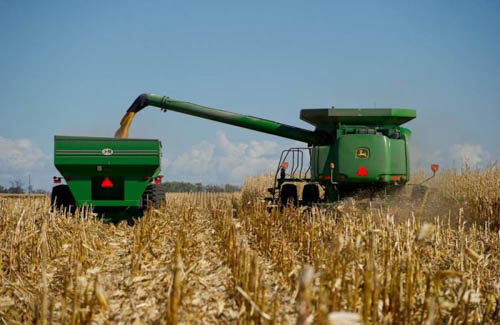Following many months of subdued markets with no major supply issues and only the vagaries of currency bringing any volatility to prices the new year has started with a distinctly different tone. Weather has reasserted itself as a major driver as protein markets have seen a significant bounce in response to a prolonged drought in Argentina affecting the planting season for soyabean. The lack of rain over recent months has reduced the acreage in the ground and has curbed yield expectations. Some analysists are predicting a crop of less than 50 million tonnes – well down on last year’s crop which came in at 57 million tonnes. This is significant on a global scale since Argentina accounts for 45% of the world trade in soyameal.

Weather is also having a major impact in North America with the complete freeze-up of US logistics following the record snowfall and ice bound waterways. Nearby soya supplies have become tight and this has resulted in firmer protein markets in recent weeks.
The Speculative Funds who bet on the Agricultural markets have gone into this period with the second largest short position they have ever had (largest was spring 2016) and decided to unwind some of these short bets in recent days which has pushed the market up further. This has meant that since the turn of the year soya has moved up around £20 per tonne ex store Ireland despite a stronger Sterling over the same period.
Grain markets are performing strangely with barley the most expensive cereal ahead of wheat and maize. There has been a tight EU barley supply picture due to the knock-on effects of larger Chinese barley imports, coupled with a recent 1 million tonne purchase by Saudi Arabia. The EU is now the main origin for importers since the Russian and Ukrainian supply has been depleted driving up our local barley prices. We are seeing plentiful supplies of wheat throughout mainland Europe with exports discouraged by the strength of the euro.
The maize market continues to represent exceptional value with high stocks overhanging the market and keeping prices down below the EU import tariff threshold. Analysts do not expect to see last year’s crop numbers repeated however as the dry weather effect in South America will reduce yields significantly in Argentina and Brazil. The US is also forecasting a reduction in corn acreage planted and the overall effect is that 2018 is likely to see a reduction in year end maize stocks.
Supply issues in the micro-ingredients which are added to animal feeds are also conspiring to push up ration prices. Following a fire in a BASF plant in Germany which is responsible for 45% of world production of vitamin A and E supplement prices have risen by 100 – 200 % adding £5.00 to £10.00 per tonne to finished feed prices from the start of 2018.
